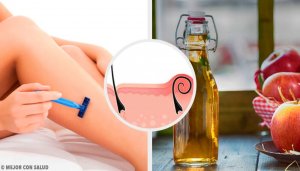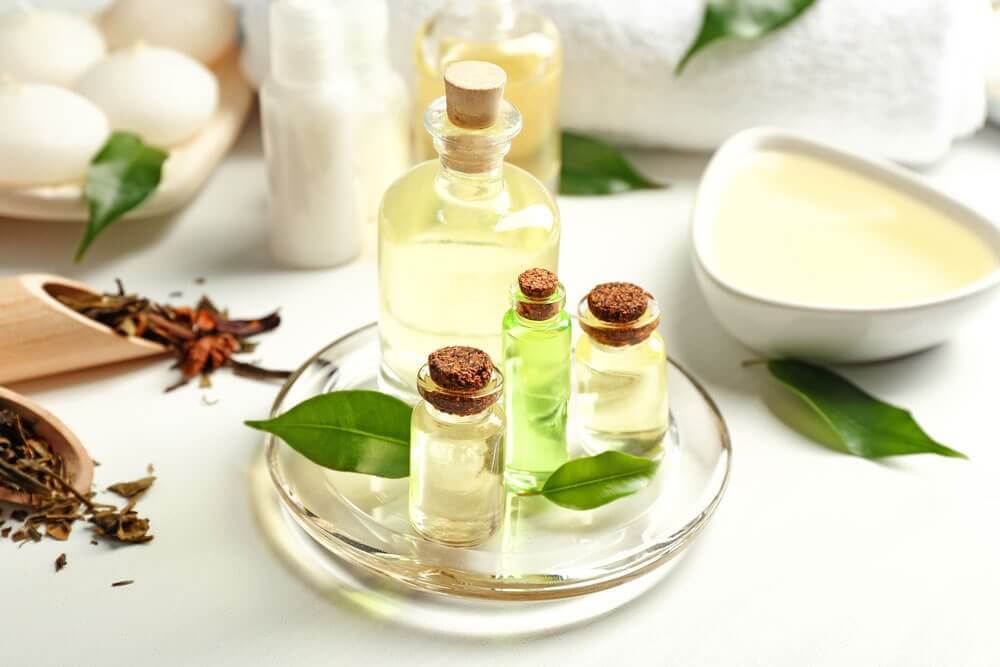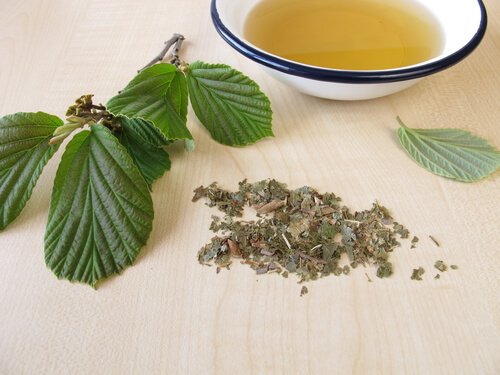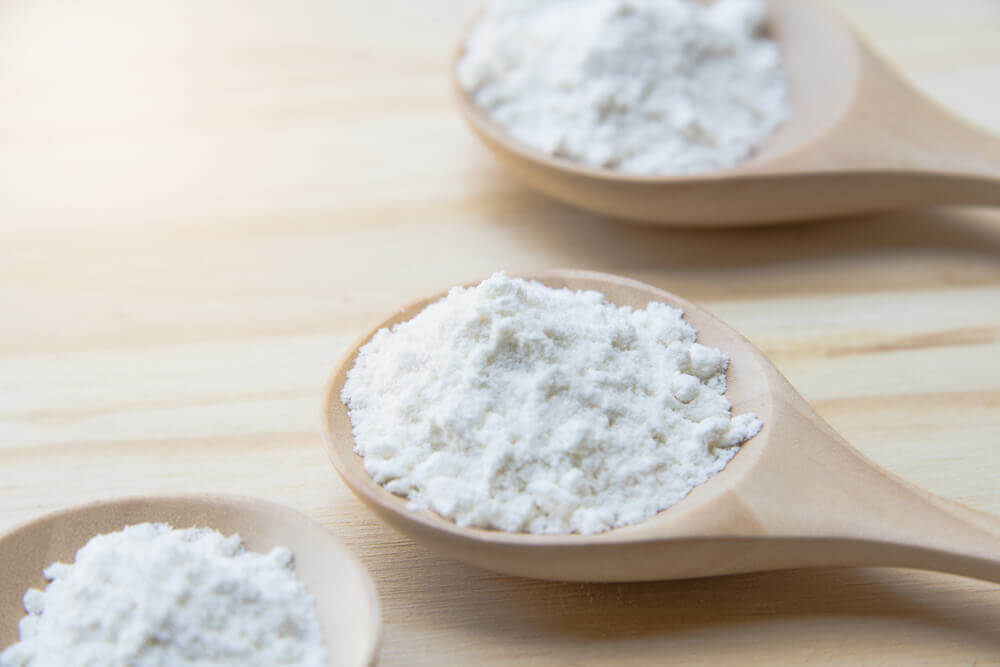5 Natural Remedies for Irritation After Shaving


Reviewed and approved by the physiotherapist Sofía Quintana Alonso
Have you ever experienced irritation after shaving? This outbreak that appears after shaving and can be so painful is called pseudofolliculitis.
These bumps appear when the tiny hairs are in the growing phase again and, instead of growing on the outside, they grow inside the skin.
Although it’s not a severe medical problem, it’s painful and annoying. The next time that you have this issue, avoid scratching so that you don’t make it worse.
How Do I Know If It’s Pseudofolliculitis and Not Something Else?
We know that skin is sensitive to a variety of factors, both natural and chemical. So, identifying if the problem is razor bumps or not is critical to know if these are the treatments that you need. Pay attention to the following symptoms of pseudofolliculitis:
- A breakout appears in the areas of your body that you’ve recently shaved or scratched.
- You can see the tiny hairs that haven’t broken through your skin. If you have dark skin, you can try and run your fingers over the area to see if they’re hairs.
Want to learn more? Hair Follicle Infection Solutions: 5 Home Remedies
1. Tea Tree Oil

Tea tree oil can benefit your body in many ways. In this case, it acts as a powerful antiseptic, combating inflammation and discomfort.
- Remember that when using oils, you should dilute them a little bit to avoid unwanted reactions.
- To prepare this remedy, you only need 2 tablespoons of tea tree oil, 1 teaspoon of olive oil and a piece of cotton.
- All you have to do is mix together the two oils.
- Once it’s ready, wash the area with soap and water.
- Then, put a little of the oil on the cotton and apply it on the affected area.
With this treatment, you don’t need to rinse off the oil and you can apply it twice a day until the bumps disappear.
If your skin is really sensitive, apply the oil immediately after shaving. This way, you’ll prevent the bumps from appearing.
2. Cold Compresses
Cold compresses are another good solution for irritation caused by shaving. The immediate effect is reducing inflammation, redness and itchiness.
This remedy is ideal for the bikini zone. You’ll see that you can use your favorite article of clothing without problem in minutes without problems.
- You only need a few ice cubes and a towel.
- To make your own cold compress, wrap the ice cubes in a towel and put it on the irritated area.
- Apply it as many times per day as necessary.
3. Witch Hazel

Witch hazel has extraordinary skin benefits. It reduces inflammation and lessens redness.
Additionally, witch oil is a natural antiseptic. This is so good because pseudofolliculitis can cause infections if it’s not treated properly. Although the lesions aren’t serious, they can have complications when irritated by clothes or being scratched.
- To use it, you will need 3 tablespoons of witch hazel and a piece of cotton.
- Take the witch hazel and add some to the cotton.
- Apply it as many times per day as necessary. After each application, you’ll notice that the bumps will slowly go away.
4. Apple Cider Vinegar

Although it’s very effective, it isn’t ideal for everyone.
- Don’t apply this remedy if you have sensitive skin.
- Don’t apply it to the bikini zone because it can be very painful.
- To make this treatment, you only need 1 teaspoon of apple vinegar and a piece of cotton.
- All you have to do is soak the cotton in the vinegar and apply it to the affected area.
- Let it dry in the open air and rinse it with cool water.
- Repeat this process 3 times a day until the burning sensation goes away.
Check out this article:
Apple Cider Beauty Secrets You Should Know
5. Baking Soda

Another simple and fast treatment is baking soda and water. This remedy will give you immediate relief without any risk. In fact, when you apply it, you will quickly feel relieved and fresh. So, it’s recommended for pseudofolliculitis just like with insect bites.
- You only need 1 tablespoon of baking soda and 2 tablespoons of water.
- Mix the two ingredients together until it forms a paste and apply it to your skin.
- Let it sit for 10 minutes.
- Cover it with gauze or a towel to prevent it from running.
- Rinse it off with cool water.
What Should I Avoid When I Have Pseudofolliculitis?
We know that this problem can be very painful. Therefore, avoid the following actions that could make it worse:
- Avoid scratching. The best thing to do is to not scratch for the 3 days following the appearance of bumps. Try not to scratch at all, or at least until the reaction has gone away.
- Avoid scratching or popping the pimples. In the moment, it may seem like it would help, but after a few hours you’ll see that you’ve created lesions that could get infected.
- Avoid using used razors. It’s possible that the pimples can appear due to a dull razor blade. If it’s because of this, we recommend that you change your blade.
All cited sources were thoroughly reviewed by our team to ensure their quality, reliability, currency, and validity. The bibliography of this article was considered reliable and of academic or scientific accuracy.
- Ramos-e-Silva, M., & Pirmez, R. (2014). Red face revisited: Disorders of hair growth and the pilosebaceous unit. Clinics in Dermatology. https://doi.org/10.1016/j.clindermatol.2014.02.018
- Jasterzbski, T. J., & Schwartz, R. A. (2015). Pseudofolliculitis cutis: A vexing disorder of hair growth. British Journal of Dermatology. https://doi.org/10.1111/bjd.13427
- Ross, E. V., Cooke, L. M., Timko, A. L., Overstreet, K. A., Graham, B. S., & Barnette, D. J. (2002). Treatment of pseudofolliculitis barbae in skin types IV, V, and VI with a long-pulsed neodymium:yttrium aluminum garnet laser. Journal of the American Academy of Dermatology. https://doi.org/10.1067/mjd.2002.124081
This text is provided for informational purposes only and does not replace consultation with a professional. If in doubt, consult your specialist.








